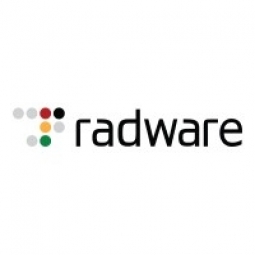Xand Offers DDoS Protection Services for Cloud and Colocation Infrastructure with Attack Mitigation System

公司规模
Large Corporate
地区
- America
国家
- United States
产品
- Xand DDoS Protection Services
- Radware’s attack mitigation system (AMS)
- DefensePro
技术栈
- Cloud Infrastructure
- Colocation Infrastructure
- Network Operations Center
实施规模
- Enterprise-wide Deployment
影响指标
- Cost Savings
- Customer Satisfaction
技术
- 网络安全和隐私 - 网络安全
- 基础设施即服务 (IaaS) - 云计算
适用行业
- 医疗保健和医院
- 教育
- 金融与保险
适用功能
- 商业运营
用例
- 网络安全
服务
- 云规划/设计/实施服务
- 网络安全服务
关于客户
Xand is the Northeast’s premier provider of cloud, managed services, colocation and disaster recovery. Since 1999, Xand has designed, built, and managed IT infrastructure services that allow enterprises to maximize its critical application performance and availability. Its broad user base includes clients spanning from large and small businesses across regulated and non-regulated industries that look to Xand for customized solutions and exceptional service.
挑战
As a provider of data center managed services and technology solutions, Xand’s customers require secure, high performance, highly-available infrastructures for its mission-critical environments. Since, distributed denial of service (DDoS) attacks can inflict costly and destructive downtime on hosted applications and resources, Xand needed a solution to protect its customers cloud systems and comprehensively guard against user data breaches.
解决方案
Xand selected DefensePro, part of Radware’s attack mitigation system (AMS) to help strengthen Xand’s DDoS protection for cloud and colocation infrastructure. The company combined its around-the-clock monitoring from the Xand Network Operations Center with Radware’s AMS to offer “Xand DDoS Protection Services” which can halt costly downtime. In the event of an attack, Xand DDoS Protection architecture absorbs the malicious traffic, keeping attack patterns from ever reaching client infrastructure. Designed from the ground up, Xand can craft protection frameworks for all aspects of mission-critical hosted systems-- compute, storage, network, and more.
运营影响

Case Study missing?
Start adding your own!
Register with your work email and create a new case study profile for your business.
相关案例.

Case Study
Hospital Inventory Management
The hospital supply chain team is responsible for ensuring that the right medical supplies are readily available to clinicians when and where needed, and to do so in the most efficient manner possible. However, many of the systems and processes in use at the cancer center for supply chain management were not best suited to support these goals. Barcoding technology, a commonly used method for inventory management of medical supplies, is labor intensive, time consuming, does not provide real-time visibility into inventory levels and can be prone to error. Consequently, the lack of accurate and real-time visibility into inventory levels across multiple supply rooms in multiple hospital facilities creates additional inefficiency in the system causing over-ordering, hoarding, and wasted supplies. Other sources of waste and cost were also identified as candidates for improvement. Existing systems and processes did not provide adequate security for high-cost inventory within the hospital, which was another driver of cost. A lack of visibility into expiration dates for supplies resulted in supplies being wasted due to past expiry dates. Storage of supplies was also a key consideration given the location of the cancer center’s facilities in a dense urban setting, where space is always at a premium. In order to address the challenges outlined above, the hospital sought a solution that would provide real-time inventory information with high levels of accuracy, reduce the level of manual effort required and enable data driven decision making to ensure that the right supplies were readily available to clinicians in the right location at the right time.

Case Study
Gas Pipeline Monitoring System for Hospitals
This system integrator focuses on providing centralized gas pipeline monitoring systems for hospitals. The service they provide makes it possible for hospitals to reduce both maintenance and labor costs. Since hospitals may not have an existing network suitable for this type of system, GPRS communication provides an easy and ready-to-use solution for remote, distributed monitoring systems System Requirements - GPRS communication - Seamless connection with SCADA software - Simple, front-end control capability - Expandable I/O channels - Combine AI, DI, and DO channels

Case Study
Driving Digital Transformations for Vitro Diagnostic Medical Devices
Diagnostic devices play a vital role in helping to improve healthcare delivery. In fact, an estimated 60 percent of the world’s medical decisions are made with support from in vitrodiagnostics (IVD) solutions, such as those provided by Roche Diagnostics, an industry leader. As the demand for medical diagnostic services grows rapidly in hospitals and clinics across China, so does the market for IVD solutions. In addition, the typically high cost of these diagnostic devices means that comprehensive post-sales services are needed. Wanteed to improve three portions of thr IVD:1. Remotely monitor and manage IVD devices as fixed assets.2. Optimizing device availability with predictive maintenance.3. Recommending the best IVD solution for a customer’s needs.

Case Study
HaemoCloud Global Blood Management System
1) Deliver a connected digital product system to protect and increase the differentiated value of Haemonetics blood and plasma solutions. 2) Improve patient outcomes by increasing the efficiency of blood supply flows. 3) Navigate and satisfy a complex web of global regulatory compliance requirements. 4) Reduce costly and labor-intensive maintenance procedures.

Case Study
Cloud-based healthcare solution for Royal Philips
Royal Philips wanted to launch its cloud-based healthcare solution HealthSuite Digital Platform in China to deliver services to help cope with challenges related to urbanization and population growth. Philips wanted to achieve this goal by combining mobile, cloud computing and big data technologies. To bring this platform and product to market, Philips required cloud computing and local technical service capabilities in China, in addition to a flexible IT infrastructure that could handle user requests.







